Science Notebooks
Science notebooks are a way students can keep a journal of their science projects and investigations. There are a variety of effective and creative ways this can be done.Having students keep notebooks is part of a national movement to emphasize the process and concepts of scientific inquiry, compared to having students memorize a dictionary of science facts.
Purpose of Science Notebooks
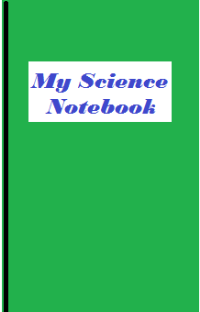 Science notebooks accomplish a number of goals.
Science notebooks accomplish a number of goals. - Students have a model to share their findings.
- The process of scientific inquiry is emphasized to the student.
- Writing and literacy are reinforced.
- Communication skills are sharpened.
- Instructors can evaluate student comprehension and possible misunderstanding.
- A journal is created that shows the student's mental progress over time.
- It can provide a medium for assigning grades to students' work.
Components of a Science Notebook
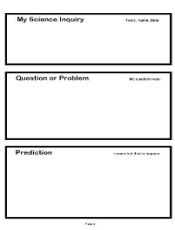 Each inquiry should contain the key components of scientific investigation.
Each inquiry should contain the key components of scientific investigation.To help make this process more concrete, some students do better if a writing prompt is given to help them communicate the different parts of the inquiry.
The following should all be included: (Possible writing prompts are in parenthesis)
- Question: (My question was...)
- Prediction: (I expected this to happen...)
- Planning the Experiment: (I planned to do the following...)
- Observation: (Here are my results...)
- Evidence: (This experiment showed that....)
- Conclusions: (I learned that...)
- Future Research: (New questions to consider might be...)
Types of Science Notebooks
There are a number of ways your science journals can be made and maintained.Handout
Pre-made handouts can be given to the student. If the components listed above are included, it makes it easier for the student to formulate their writing.The advantage of the handout is ease of use.
The disadvantage is that it it is a cookie cutter model, and not all experiments fit the model. The student may need more room or less room depending on the exact project.
We have developed a two-sided handout that can be folded in half and made into a booklet.

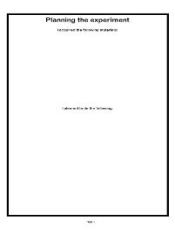
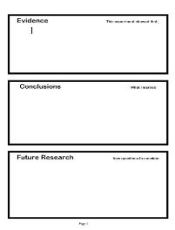
Click the middle image above to download the free science notebook handout.
Spiral Notebook
A spiral or other bound notebook can be purchased and the student's writing can be included in it for each project.The advantage of the spiral notebook is that it gives the student as much room as needed for each project. The notebook also serves as a journal illustrating their progress through the year.
There are a couple of disadvantages to this type of notebook. If a student makes a mistake, or spills something on their notebook, it effects the whole notebook. Adults often see the usual childhood errors as a record that demonstrates the students' progress - mistakes and all. The student may view it with frustration.
Another disadvantage is the fact that most notebooks will not be filled. If you have a 50 page notebook, and did ten science projects over the course of the year that each took two pages, it still leaves a lot of blank paper. That may translate into a feeling for some students that they didn't do enough.
Unit Study Booklets
Unit study booklets are often preferred by families and teachers who do unit studies.Booklets usually consist of a collection of 8 1/2 X 11 sheets of paper related to the unit study topic. They are often kept in a three-ring binder until the completion of the unit study. At that time, the student assembles the entire project, creates front and back covers (usually with art work) and binds or staples it.
What is in the unit study booklet?
- The science notebook inquiry, with the components listed above.
- Bibliography of books read or resources used.
- Art work
- The raw data from the experiments
- Coloring pages or work book pages
- Photos of projects
- Glossary of terms
- Science Matchcards learned
- Anything else relevent to the unit study.
Lap Books
Lap books are popular with homeschoolers. They are a more three dimensional representation of a unit study. They can contain all of the information in the unit study booklet, but often with more artistic endeavor. They are fun to share with others and display at shows. They are easily adapted for science experiements and projects.The main part of the lapbook is constructed from a file folder that is folded in thirds. Index cards, construction paper, origami paper, or other smaller pieces are secured inside. There would be a sub-section for all the main areas of the science notebook:
- Question
- Prediction
- Planning the Experiment
- Observation
- Evidence
- Conclusions
- Future Research
Other Ideas for Notebooks
Here are a few ideas for the science notebook for those using unit study booklets or lap books.- Use a handout with the seven components of scientific inquiry. Download the handout above, or develop your own.
- Each of the components can be written on an index card. (Different colored cards can be used.) They can then be cut to the size needed and artistically arranged in a lapbook or poster board.
- A paper can be typed with each of the components as a paragraph. This correlates the relationship between science and writing. Clipart can be added as well to make the presentation more interesting.
As with all other aspects of homeschooling, the science notebook can be an individualized, creative, and effective means of demonstrating the students' learning.
MatchCard Science
How To Use MatchCards

Download the FREE MatchCard Science Instructor's Guide and see how MatchCards can make building their science knowledge base fun.
Astronomy Unit Study
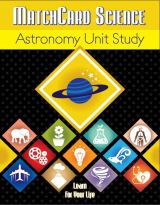
Explore the universe with the MatchCard Science Astronomy Unit Study..
12 Science Unit Studies

Chemistry is only one of twelve complete unit studies for kids in 3rd to 8th grade.
Comprehensive objectives, hands-on projects, suggested science fair experiments, and the fun game-like MatchCards keep them interested in learning science. See all twelve MatchCard Science Unit Studies.

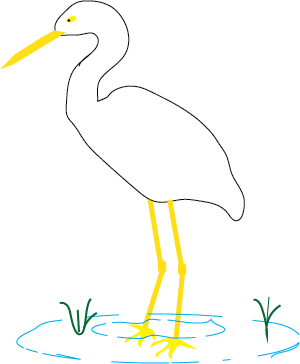
About Our Site
Hands-On Learning













